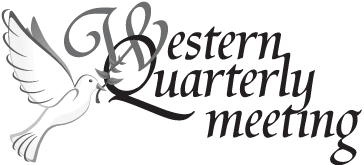Want to see your event on this page? Submit content to Coordinator@WesternQuarterQuakers.org!

- This event has passed.
Kennett Friends Spirituality Group
April 21, 2021 @ 7:00 pm - 8:30 pm
The spirituality Group continues to meet every 3rd Wednesday evening at 7:00. On this Wednesday April 21, Annmarie Carr will lead us in a discussion about the Byzantine way of illuminating manuscripts!
Please join, all are welcome! –
https://us02web.zoom.us/j/86739314909?pwd=QnJmUWxWQ2ZPVzRkQ3M2YklDRWp2QT09
Meeting ID: 867 3931 4909 Passcode: 391875
We looked last month at several of the great Irish illuminated manuscripts, and marveled at the intricacy of their interlace ornament.
Writing and ornament together form an abstract unity, as if demonstrating the immense complexity and vitality that reside within the very words of Scripture. In some ways the Byzantine way of illuminating manuscripts is the converse of the Irish. It, too, fairly pulsates with the energy of the word, but it focuses emphatically on the human figure, and its interest is in bringing to life the relational experience of words spoken and heard as they are exchanged among people.
What we call Byzantium called itself the Empire of the Romans. It was the Roman Empire as it continued for eleven centuries after the translation of its capital by the emperor Constantine from Rome to Constantine’s city— Constantinople—in 330 CE. It was a Christian state; its Church, centered in Constantinople, is the basis of what we now know as the Orthodox Church. By the 6 th century, the Empire’s language had become Greek and remained so to the end in 1453. Johannes Gutenberg began his Bible project in 1452; the Empire fell in 1453. Thus Byzantium was throughout its history a pre-print culture. Books were labor-intensive and expensive, and painted adornment even more so.
Nonetheless, among medieval societies, Byzantium was a comparatively literate one. Church, army, and imperial administration all operated at a high level of literacy, and its major cities were entrepots of far-flung international trade networks, demanding numeracy and basic literacy. We continue to be astonished by the large number and wide distribution of the small lead seals that were used in Byzantium to seal letters—they appear in archaeological sites all over the empire; and we know of laypeople as well as clergy and monks who accumulated libraries and prized books.
Accordingly, along with books designed to serve large communities, Byzantium stands out in the Middle Ages for the number of books, including illuminated ones, that were made for individual, personal use.
They are overwhelmingly religious, and their illuminations emphasize figures whom we Quakers by and large do our best to avoid—Jesus Christ, the Mother of God, and major saints. But I think there is an aspect of the Byzantine images that can be of interest to us Friends in the light of our faith in the priesthood of all believers. This is the degree to which Byzantine imagery is rarely just ministry; it is a means of building an experiential bond between the individual reader and the divine. The Orthodox Church is great in its contemplative mystics, and the faith in the experiential immediacy of humans’ relationship to the divine shaped the way the holy was expressed in art.
